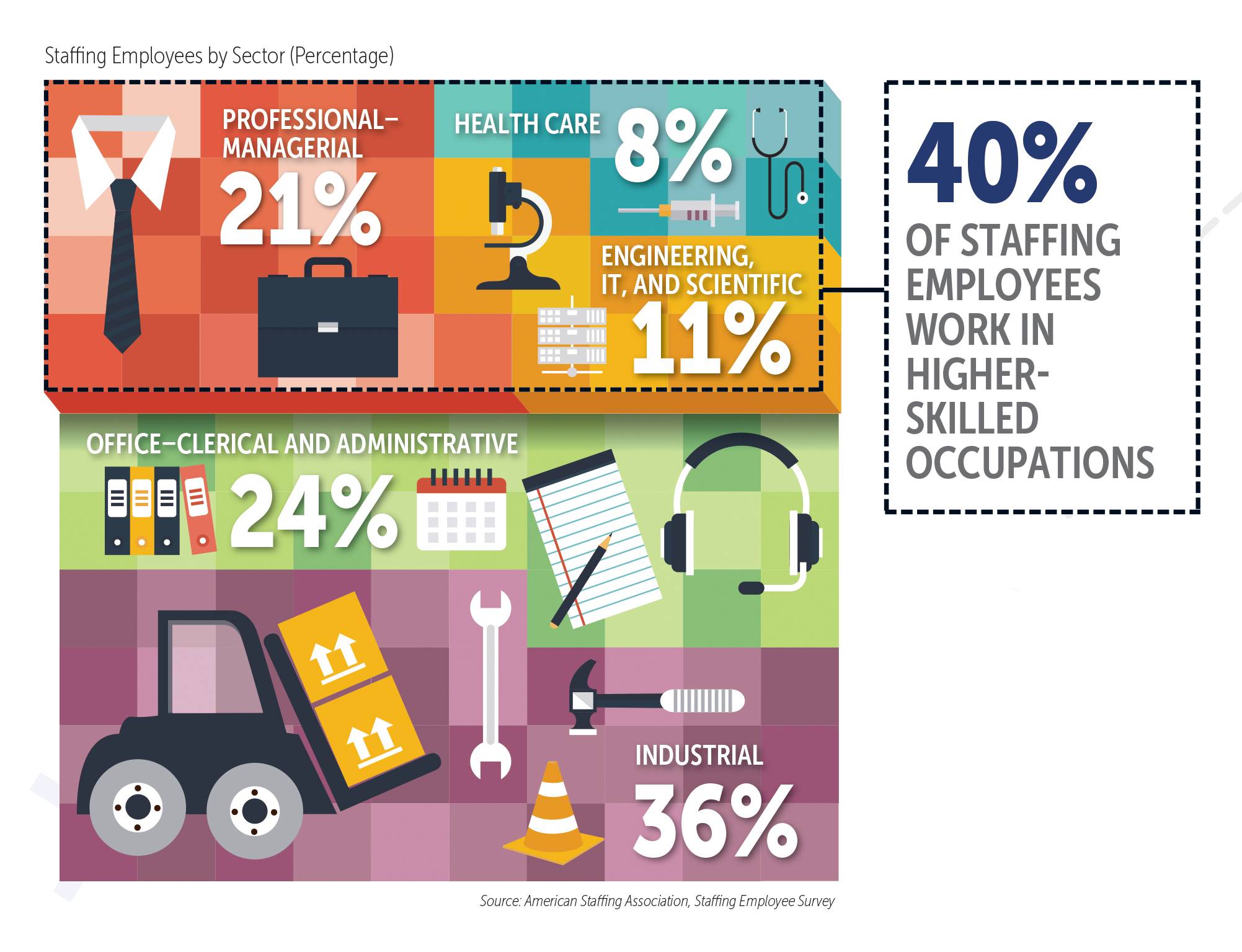6 Ways to Improve Effectiveness

The traditional model of hiring full-time employees was what they did in your grandfather’s workplace. Today, employers strategically focus on flexibility and adaptability by integrating contract talent from staffing firms into their workforce planning. The rise of the freelance economy has ushered in a new era where businesses can tap into specialized skills without the long-term commitment of a permanent hire and they do it for all job titles and disciplines. No longer the domain of office support or even tech talent, today’s contract talent is an eclectic mix of occupations and levels of experience.
The Freelance Economy
The freelance economy, also known as the gig economy, has reshaped the way work is approached across industries, statistics show that nearly three million contract employees work for staffing firms during an average week. The prevalence of freelance platforms and staffing firms has empowered professionals to offer their skills on a project basis, creating a win-win situation for both workers and employers. For employers, this trend offers a unique opportunity to access a diverse pool of talent, including experts in niche areas, without the constraints of a traditional hiring process or the costs of employment. Today, according to the American Staffing Association, 40% of staffing employees (contractors) work in higher-skilled occupations. 
Contract talent allows organizations to scale their workforce up or down based on project demands. This flexibility is particularly advantageous in industries with fluctuating workloads.Companies can save on benefits, office space, and other overhead costs associated with permanent hires. Contract talent also often brings a fresh perspective to projects. By leveraging a diverse pool of freelancers, temporary associates or staffing firm contractors, organizations can benefit from a wealth of experiences and viewpoints, fostering innovation and creativity. The use of contractors allows employers to also “test drive” potential hires; this try-before-an-offer enables companies to determine if the individual can add value to their team and at the same time is a benefit to the contractor who gets insight into the organization’s culture and workflow before committing to a “permanent” role.
Many Lloyd Staffing clients have broadened their use of our solutions by tapping into our varied disciplines and talent pipelines for many different job titles. They often interview these individuals the same way they do for permanent staff, but with the distinction that it will be for an interim period – typically 3 months or longer. This is especially true for Interim Executives where contract engagements can bring stability in times of crisis, transition or even unexpected C-Suite shake-ups; in fact, C-Suite roles now account for 11% of the temporary workforce according to the US Bureau of Labor Statistics. Many of these contract executives work in roles within marketing, HR, project management and large-scale system implementations.
Organizations need to identify key roles and functions that can be effectively outsourced or handled by contractors. This strategic approach ensures that critical functions are not compromised while providing the flexibility needed to adapt to market dynamics. Companies that excel in strategic workforce planning can harness the benefits of the freelance economy while maintaining operational efficiency.
This integration of contract talent into your workforce also introduces new challenges related to risk management and compliance. You will need to establish clear guidelines and contractual agreements to mitigate legal and compliance risks associated with their engagement which is why utilizing a staffing firm to supply this talent offers a good safety net. A proactive approach to risk management ensures that the organization can fully capitalize on the advantages of the freelance economy without compromising its integrity. These individuals once assigned, are neither your employees nor are they independent contractors. Lloyd (or whatever staffing firm you use) is their employer and we handle all the costs of employment including weekly pay and even benefits.

- Define Clear Objectives and Expectations:
Clearly outline the project scope, deliverables, and expectations for the contract talent. Providing a comprehensive overview helps contractors understand their role within the broader context of the organization. Review the requisite skills and the objectives of the position with your recruiter. S/he will provide you a slate of possible talent, who remain Lloyd contractors throughout the engagement.
- Effective Onboarding Processes
Develop streamlined onboarding processes to ensure that contract talent can quickly integrate into the team. This may include access to necessary tools, training materials, and introductions to key team members.
- Open Communication Channels
Foster open lines of communication between full-time employees and contract talent, as well as with your recruiting partner. Encourage regular check-ins, virtual meetings, and collaboration tools to facilitate seamless integration and knowledge sharing. We recommend touch points of 1 week, 1 month, 90 day, 6 months and annually. The BLS says managerial contractors have an average engagement of six months.
- Incorporate Contract Talent into Company Culture
While contract workers may not be permanent employees, it’s essential to make them feel like valued contributors. Include them in team activities, virtual events, and communication channels to create a sense of belonging, but don’t overstep the relationship – the staffing firm is the individual’s employer.
- Performance Evaluation and Feedback
Implement performance evaluation processes for contract talent, providing constructive feedback. This helps in refining the collaboration and ensures alignment with organizational goals.
- Legal Compliance and Clarity
Ensure compliance with labor laws and regulations when engaging contract talent. Clearly define the terms of the engagement, including deliverables, timelines, and compensation, to avoid any misunderstandings. Let your staffing partner manage the contractor when it comes to standard employer/employee interaction. While you want contractors to feel like a part of the team, you need to take care to avoid co-employment issues. This is best done by clearly defining roles and responsibilities in a job description/contract, emphasizing that the staffing agency is the employer of record. Additionally, companies should refrain from excessive involvement in day-to-day activities, allowing the staffing agency to retain control over hiring, firing, and other employment-related decisions.
SMARTER TALENT MANAGEMENT
Embracing the freelance economy and integrating contract talent into your workforce plan can bring numerous advantages to your organization. By strategically leveraging the unique skills and perspectives of contract talent, businesses can enhance their agility, meet project-specific demands, and stay competitive in an ever-changing market. With a thoughtful approach to onboarding, communication, and performance management, employers have the ability to create a flexible, blended workforce, fostering a dynamic and collaborative work environment.
**********

Lloyd offers the following practice areas as resources for Contract Talent.
If you are an employer ready to have a conversation about exploring a contractor workforce strategy, we welcome hearing from you. REQUEST TALENT
